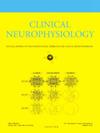Brain-heart interactions are associated with mortality and acute encephalopathy in ICU patients with severe COVID-19
IF 3.7
3区 医学
Q1 CLINICAL NEUROLOGY
引用次数: 0
Abstract
Objective
Research in critical care has revealed the significance of autonomic dysfunctions, and more recently of brain–heart interactions, as valuable biomarkers for evaluating patients’ physiological status. These biomarkers provide insights into consciousness levels, severity, and outcomes. This study aims to determine the potential of these biomarkers in predicting the mortality and neurological outcome of severe COVID-19 patients.
Methods
We examined severe COVID-19 patients who required mechanical ventilation and observed them both during sedation and after sedation cessation. Standard EEG and ECG recordings were conducted at bedside, from which 5 min of continuous data were analyzed. Using a synthetic data generation model, we evaluated bidirectional brain–heart interactions from EEG power and heartbeat dynamics series.
Results
Our findings indicate that brain–heart interactions, especially involving cardiac parasympathetic activity, indicate the degree of patients’ severity. We observed correlations with acute encephalopathy duration (coma and delirium), particularly evident in top-down markers (from brain to heart) while bottom-up signaling (from heart to brain) correlated with ICU mortality. Additionally, we noted stronger modulation of brain–heart interactions in milder patients when comparing sedation versus non-sedation conditions, compared to those in more severe states.
Conclusions
Our results imply that autonomic dysfunctions, as measured through brain–heart interactions, can track the pathophysiology of comatose states following SARS-CoV-2 infection.
Significance
These findings highlight the potential of brain–heart interactions as an integrated marker for autonomic function in critical care, offering a more accurate assessment of patient severity and outcomes compared to isolated cardiac or brain measures.
重症COVID-19 ICU患者脑-心相互作用与死亡率和急性脑病相关
在重症监护中的研究已经揭示了自主神经功能障碍的重要性,以及最近的脑-心相互作用,作为评估患者生理状态的有价值的生物标志物。这些生物标记提供了对意识水平、严重程度和结果的见解。本研究旨在确定这些生物标志物在预测重症COVID-19患者死亡率和神经预后方面的潜力。方法选取需要机械通气的重症COVID-19患者,观察镇静期间和镇静停止后的情况。床边进行标准脑电图和心电图记录,分析5分钟连续数据。利用合成数据生成模型,我们从脑电图功率和心跳动态序列中评估了双向脑-心相互作用。结果脑-心相互作用,特别是涉及心脏副交感神经活动,表明患者的严重程度。我们观察到与急性脑病病程(昏迷和谵妄)的相关性,特别是在自上而下的标记(从大脑到心脏)中,而自下而上的信号(从心脏到大脑)与ICU死亡率相关。此外,我们注意到,在比较镇静和非镇静情况下,与那些更严重的状态相比,在较轻的患者中,脑-心相互作用的调节更强。结论通过脑-心相互作用测量的自主神经功能障碍可以追踪SARS-CoV-2感染后昏迷状态的病理生理。这些发现强调了脑-心相互作用作为重症监护自主神经功能综合标志物的潜力,与孤立的心脏或脑测量相比,它提供了对患者严重程度和结果的更准确评估。
本文章由计算机程序翻译,如有差异,请以英文原文为准。
求助全文
约1分钟内获得全文
求助全文
来源期刊

Clinical Neurophysiology
医学-临床神经学
CiteScore
8.70
自引率
6.40%
发文量
932
审稿时长
59 days
期刊介绍:
As of January 1999, The journal Electroencephalography and Clinical Neurophysiology, and its two sections Electromyography and Motor Control and Evoked Potentials have amalgamated to become this journal - Clinical Neurophysiology.
Clinical Neurophysiology is the official journal of the International Federation of Clinical Neurophysiology, the Brazilian Society of Clinical Neurophysiology, the Czech Society of Clinical Neurophysiology, the Italian Clinical Neurophysiology Society and the International Society of Intraoperative Neurophysiology.The journal is dedicated to fostering research and disseminating information on all aspects of both normal and abnormal functioning of the nervous system. The key aim of the publication is to disseminate scholarly reports on the pathophysiology underlying diseases of the central and peripheral nervous system of human patients. Clinical trials that use neurophysiological measures to document change are encouraged, as are manuscripts reporting data on integrated neuroimaging of central nervous function including, but not limited to, functional MRI, MEG, EEG, PET and other neuroimaging modalities.
 求助内容:
求助内容: 应助结果提醒方式:
应助结果提醒方式:


